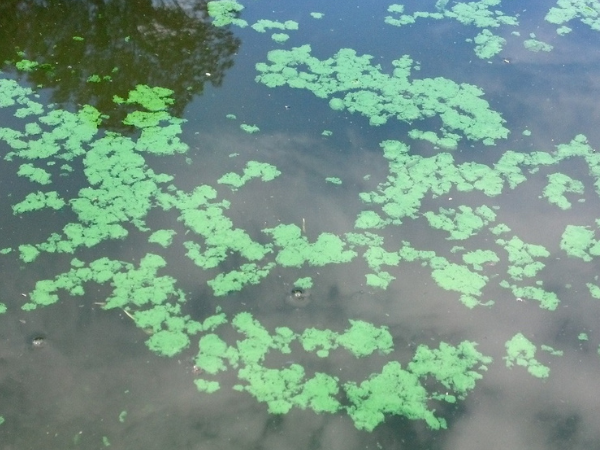When the sun is shining and the days are warm, there’s nothing quite like the serenity of spending time by a tranquil pond or lake. However, lurking beneath the surface of this idyllic scene can be an unwelcome visitor: cyanobacteria blooms. Known colloquially as blue-green algae, these microscopic organisms can pose significant threats to water quality, aquatic life, and even human health.
At Aquatic Weed Wizards (AWW), we recognize the importance of keeping your ponds and lakes pristine and inviting. With years of dedicated experience, our veteran-owned team provides solutions that help manage and control these potentially harmful blooms. Let’s dive into understanding what cyanobacteria blooms are and how we, at AWW, can help you maintain your aquatic environments.
What Are Cyanobacteria Blooms?
Cyanobacteria, although often grouped with algae, are a distinct type of bacteria. These bacteria live in various water bodies—from freshwater lakes and ponds to brackish waters and marine environments.
You might ask, “What causes these blooms to occur?” Simply put, cyanobacteria require specific conditions to thrive: sunlight, stagnant water, and nutrients like phosphorus and nitrogen. During warm months, especially in waters where nutrient levels are high due to agricultural run-off or other sources, these bacteria can proliferate extensively, forming what we call blooms. These blooms float on the water’s surface, often creating a visible film or scum that can vary in color but is predominantly blue-green.
The problematic nature of cyanobacteria blooms extends beyond just their appearance. While not all cyanobacteria produce toxins, species that do can have serious repercussions. These toxins, known as cyanotoxins, can have detrimental effects on aquatic ecosystems and human health, making the management of such outbreaks critically crucial in maintaining a safe and healthy environment.
The Impact of Cyanobacteria Blooms
The negative effects of cyanobacteria blooms on aquatic environments and surrounding communities are multi-faceted and severe. Ecologically, these blooms are notorious for causing a phenomenon known as eutrophication. As blooms die off and decompose, they consume vast amounts of oxygen from the water, leading to hypoxic—or low oxygen—conditions. Such conditions can be lethal to fish and other aquatic organisms, resulting in large-scale die-offs and a decline in biodiversity.
Furthermore, blooms can alter the natural balance of aquatic ecosystems. They can block sunlight from reaching aquatic plants and phytoplankton deeper in the water column, disrupting photosynthesis and causing a ripple effect through the food chain. Such changes can have lasting impacts on the overall health and stability of the ecosystem.
For humans and animals, the dangers of cyanobacteria extend beyond the water. Many species of cyanobacteria produce potent toxins that can contaminate drinking water, recreational water bodies, and fish that are consumed. Exposure to these toxins can cause various health problems, ranging from mild skin rashes to severe respiratory and neurological issues. Cases of livestock and pet deaths due to cyanotoxin exposure are also well-documented, highlighting the severe implications for agricultural and domestic animal health.
Identifying Cyanobacteria Blooms
Identifying cyanobacteria blooms early is critical for effective management and mitigation. One of the first signs is a visible scum on the water surface, often described as a paint-like or pea soup appearance. However, these blooms can take different forms and colors, ranging from bright green to iridescent blue or even reddish-brown hues.
Another clue is the odor. Cyanobacteria blooms can release a strong, unpleasant smell when they decay, often likened to rotting eggs or sewage. This smell, coupled with the discoloration of water, can make the affected area extremely unappealing.
Distinguishing cyanobacteria from other algal blooms is important for implementing the right control measures. While laboratory analysis is the most accurate identification method, some other tests and indicators can suggest the presence of cyanobacteria. At AWW, our experts are adept at recognizing the subtle differences between various types of algae and bacteria, enabling us to tailor our management strategies effectively.
For individual pond and lake owners, it’s crucial to refrain from touching or coming into contact with suspected blooms. Preventing exposure minimizes health risks while decisions about dealing with the bloom are made. Property owners can ensure both environmental safety and personal health by involving professionals like AWW, who are trained in safely handling and mitigating these blooms.
Prevention and Control Methods
Preventing cyanobacteria blooms requires a proactive approach, focusing on reducing the contributing factors. Effective prevention involves managing nutrient levels in water bodies to deny the bacteria the key ingredients they need to flourish. Here are some strategies to consider:
1. Nutrient Management: Minimize the use of fertilizers near water bodies and implement buffer zones of vegetation to trap nutrients before they reach the water. Proper agricultural and urban planning can significantly reduce nutrient runoff.
2. Water Circulation: Installing aeration systems increases water movement and oxygenation, disrupting the conditions favorable to cyanobacteria growth. Aeration also supports beneficial aquatic life, which helps in outcompeting harmful bacteria for nutrients and space.
3. Regular Monitoring: Keeping a close eye on water quality and nutrient levels can help pinpoint when conditions become ripe for bloom formation. Regular monitoring allows for timely interventions before a full-scale bloom develops.
4. Physical Removal: In some cases, mechanical removal of blooms can be necessary, particularly if they pose an immediate risk to health or the environment. Care should be taken to dispose of blooms appropriately to prevent further toxin release.
At Aquatic Weed Wizards, we understand that every water body is unique. That’s why we offer tailored solutions for bloom prevention. Our expertise includes recommending and installing the right aeration systems suited to your specific needs. Whether through solar or standard systems, our goal is to enhance circulation and oxygenation, thereby naturally inhibiting bloom development.
AWW’s Expertise in Managing Cyanobacteria Blooms
Aquatic Weed Wizards offers a suite of services designed to keep your water bodies healthy and cyanobacteria-free. Our comprehensive approach includes:
– Professional Weed Treatments: Our team uses targeted, eco-friendly treatments to manage harmful plant growth and enhance overall water quality.
– Solar and Standard Aeration Systems: Custom installations that promote water circulation and aeration, keeping blooms at bay while supporting aquatic health.
– Regular Monitoring and Maintenance: Ongoing assessments to detect early signs of potential bloom growth and take preventive measures.
Our dedication to delivering top-notch customer service means we’re with you every step of the way. We ensure you’re informed about the processes and understand the significance of every treatment. With AWW, you can be confident that your pond or lake is in expert hands.
In the face of potential cyanobacteria problems, taking proactive and informed steps is essential. Not only do cyanobacteria blooms diminish the beauty and utility of your waterbody, but they also pose environmental and health risks.
Aquatic Weed Wizards stands ready to assist with our professional, knowledgeable team. Our veteran-owned business is committed to quality, reliability, and service that leaves our clients reassured and satisfied. Don’t let cyanobacteria disrupt your peace of mind or the joy your water feature brings—reach out to AWW for a consultation and let us help you maintain a gorgeous, healthy aquatic ecosystem.
Remember, maintaining clear and beautiful ponds and lakes is just a call away with AWW’s expertise and commitment. Contact us today to explore how we can support your aquatic management needs.

